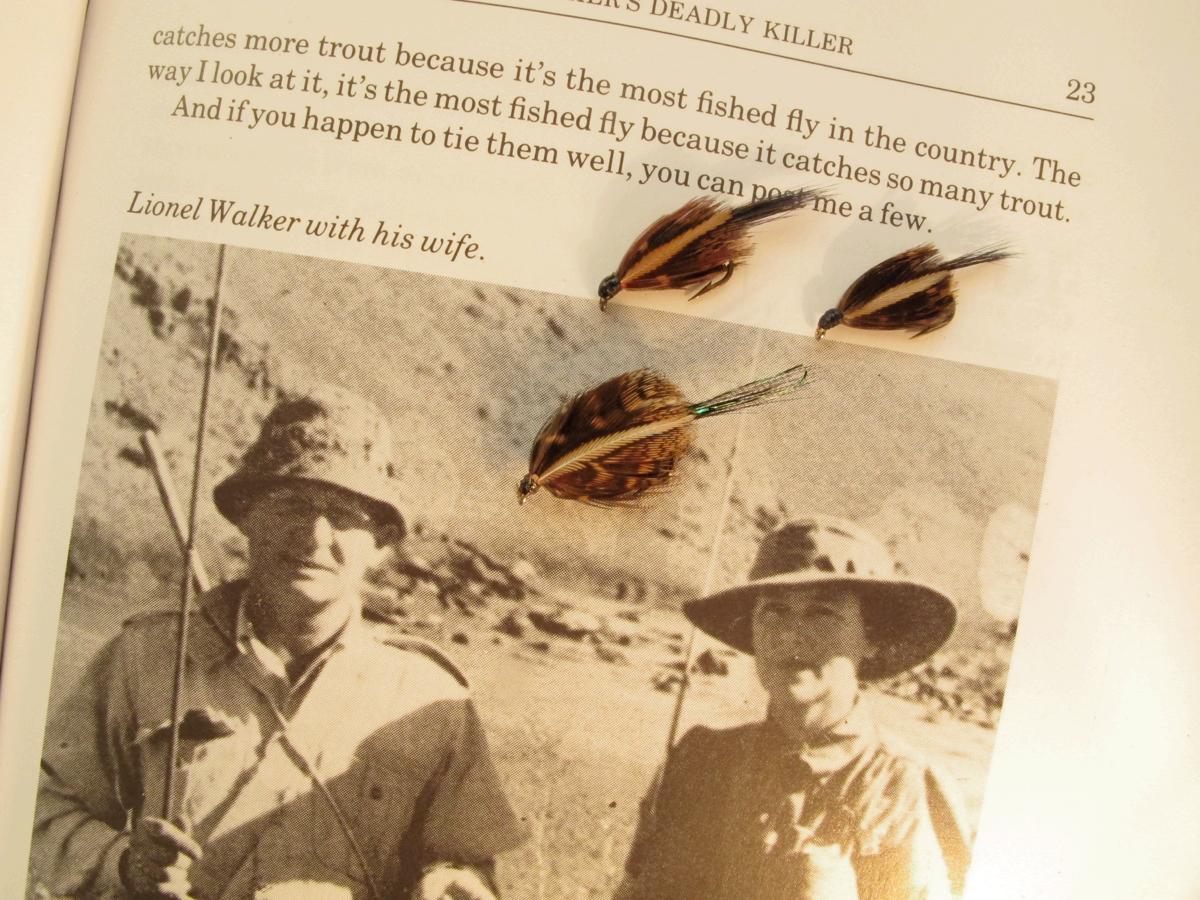
3 minute read
Heritage Flies - Mountain Swallow and Walkers killer by Peter Brigg
Mountain Swallow - 1935.
Although not a well-known fly the Mountain Swallow was considered to be the first local fly that was design and created with specific intent. Fred Bowker (Kingfisher) was the creator. He wrote two books, A Trout Fisher in South Africa (1922) and Trout Flies (1938) and it was in the latter that he described a fly of his own design, the Mountain Swallow.
Advertisement
He contended that strict imitation did not matter and that presentation was far more important. To prove it he designed the most outlandish fly he could think of, the Mountain Swallow. In the 1935 season Bowker fished this fly exclusively and keeping copious records proved his point by showing that there was no reduction in the number of trout caught. It was a winged wet fly in which the colours orange over blue predominated following the salmon fly techniques of tying. The feathers were originally derived from the Carmine Bee-Eater although there is debate about this some believing that they were rather from the European Bee-Eater which was commonly known as the Mountain Swallow.
Commercial patterns locally and later internationally substituted the Bee-Eater feathers for dyed rooster feathers. It has not been possible to find an example of the original fly. However Bill-Hansford Steele in his book Fishing Flies for Africa, (2009) at page 128 provides a picture of the Mountain Swallow and includes some additional interesting background information.
The tying recipe is given as -
Hook - Size 10 or 12 down-eye
Silk - Blue
Tail - Mixed dyed orange and blue cock hackle fibres
Body - Orange wool ribbed with flat gold tinsel
Wing - Slips of dyed Mallard primary. Blue as the bottom slip with the orange slip on top.
Throat - Mixed dyed orange and blue cock hackle fibres.
Arguably South Africa’s most famous fly, the Walker’s Killer, was designed and tied in the early 1950s. Commonly referred to as the “Killer” design which involves a series a feathers tied vertically in a sequence on either side of the hook shank. However, the Walkers Killer had its origins in New Zealand based on the well-known Mrs Simpson fly, that was tied using this method. However, the New Zealand author, Keith Draper, in his book Trout Flies in New Zealand (A. H. & A.

Walker’s Killer – 1950s
W. Reed, Wellington 1971) says the first person to tie flies in this style was Frank Lord of Rotorua who developed the Lord’s Killer during the 1940s.
Not surprisingly then, the Walker’s Killer was the product of a New Zealander, Lionel Walker, who fished the Tongariro River and Lake Taupo in the 1940s. Walker met and married a South African woman who had gone to New Zealand as a teacher. and his wife Isabelle returned to South Africa where he remained until he died in 1964.
What makes the fly unique is that the original was constructed of eighteen English partridge feathers tied in three vertical tiers of three feathers on each side of the hook shank - nine feathers on each side. This gives it a most desirable characteristic - it feels soft, resilient, plump and succulent.
Since it was first introduced the Walkers Killer’s has deceived tens of thousands of trout and its success is largely attributable to its resemblance to two of the staple constituents in the diet of South African trout

- dragonfly nymphs and the freshwater crab. The crab, Potamonautes, is not found in the Northern hemisphere and also does not occur in trout streams in South America, Australia and New Zealand. It is however, an important seasonal constituent in the diet of trout and other freshwater fish in South Africa.
The Walker’s Killer remains a fly of choice of many, although whilst still popular, its reputation has to an extent been eroded by some of the modern stillwater and big fish patterns.










